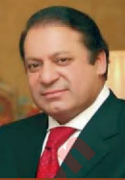
Nawaz Sharifs First Regime
Nawaz Sharif’s first term as Prime Minister of Pakistan, from 1990 to 1993, was a pivotal period in the nation’s history marked by significant political and economic developments. This article delves into the key events, challenges, and achievements of Nawaz Sharif’s inaugural regime.
The Political Landscape
Nawaz Sharif, a prominent industrialist and politician, came to power following the general elections held in October 1990. His political party, the Pakistan Muslim League (PML-N), secured a majority in the National Assembly, catapulting him into the position of Prime Minister. Sharif’s rise to power was emblematic of the evolving political dynamics in Pakistan as the country navigated its democratic transition.
Economic Liberalization and Structural Reforms
One of the defining features of Nawaz Sharif’s first regime was its commitment to economic liberalization and structural reforms. Sharif pursued a range of policies aimed at privatizing state-owned enterprises, encouraging foreign investment, and reducing government intervention in key sectors of the economy. These reforms aimed to revitalize Pakistan’s economy, which had faced stagnation in the preceding years.
Sharif’s government also took steps to improve tax collection and reduce fiscal deficits, setting the stage for economic stability and growth. The “1991 Economic Reforms” introduced by his administration were hailed as a significant milestone in Pakistan’s economic transformation.
Foreign Policy and Security
Nawaz Sharif’s foreign policy during his first term was marked by efforts to improve relations with neighboring countries, particularly India. His meetings with Indian Prime Minister Rajiv Gandhi in 1992 played a crucial role in initiating a dialogue process to resolve long-standing issues between the two nations. This marked the beginning of a more conciliatory approach in Pakistan-India relations.
However, Sharif’s tenure also saw the emergence of challenges on the national security front. The conflict in Jammu and Kashmir continued to simmer, and Pakistan faced instability in its western neighbor, Afghanistan. These issues required deft diplomacy and security management.
Challenges and Discontent
While Nawaz Sharif’s government achieved notable economic progress, it also faced criticism and discontent. His privatization policies were met with resistance from labor unions and some segments of society, resulting in strikes and protests. The government’s management of social issues and public welfare was scrutinized, leading to concerns about growing inequality.
Additionally, political rivalries and tensions between the executive and the judiciary added to the complexities of governing Pakistan. The period also saw allegations of corruption within the government, which would become a recurring theme in Pakistani politics.
Dismissal and End of the First Term
In April 1993, President Ghulam Ishaq Khan dismissed Nawaz Sharif’s government amid allegations of corruption and mismanagement. This marked the end of his first term as Prime Minister and ushered in a period of political instability.
Conclusion
Nawaz Sharif’s first regime from 1990 to 1993 was a period of significant transformation in Pakistan’s political and economic landscape. His government’s commitment to economic liberalization and structural reforms laid the foundation for future economic growth. However, challenges related to governance, political rivalries, and allegations of corruption complicated his tenure.
Nawaz Sharif’s legacy in Pakistan’s political history is marked by his efforts to modernize the economy and foster better relations with neighboring countries. His return to power in subsequent years and continued influence on the country’s politics underscored his enduring impact on Pakistan’s political landscape

